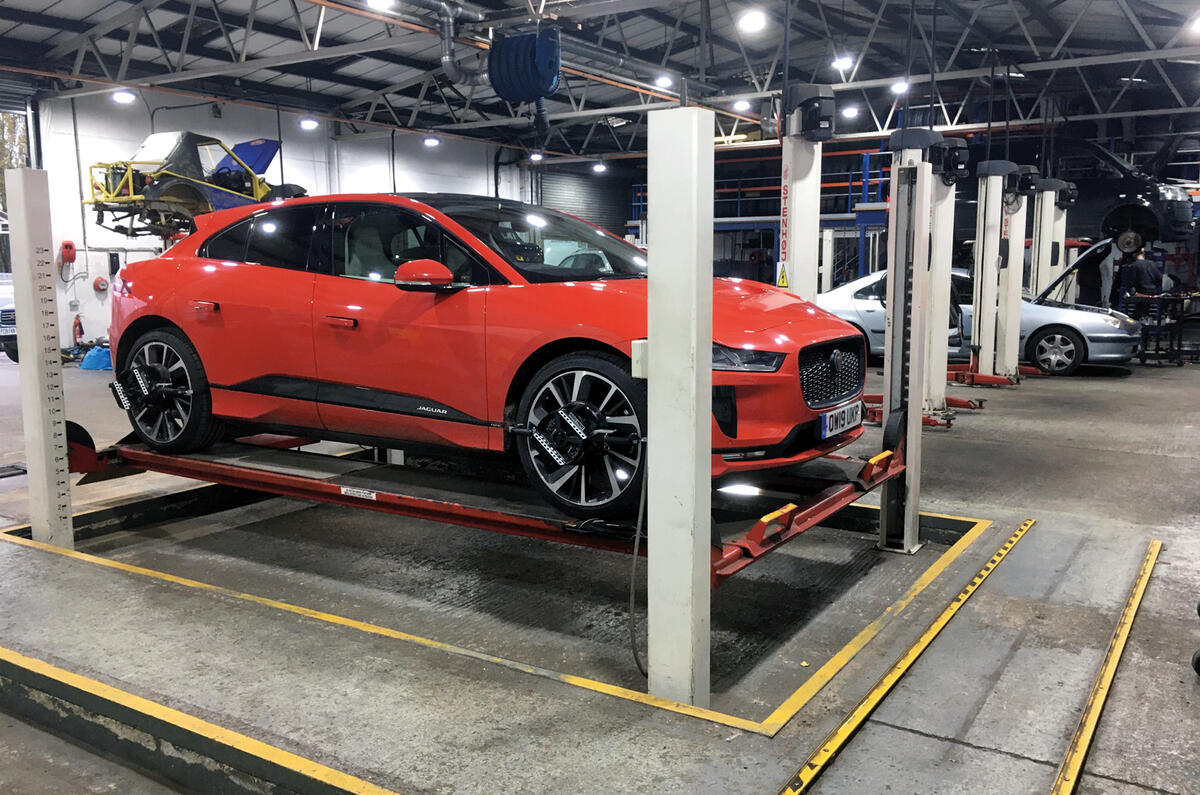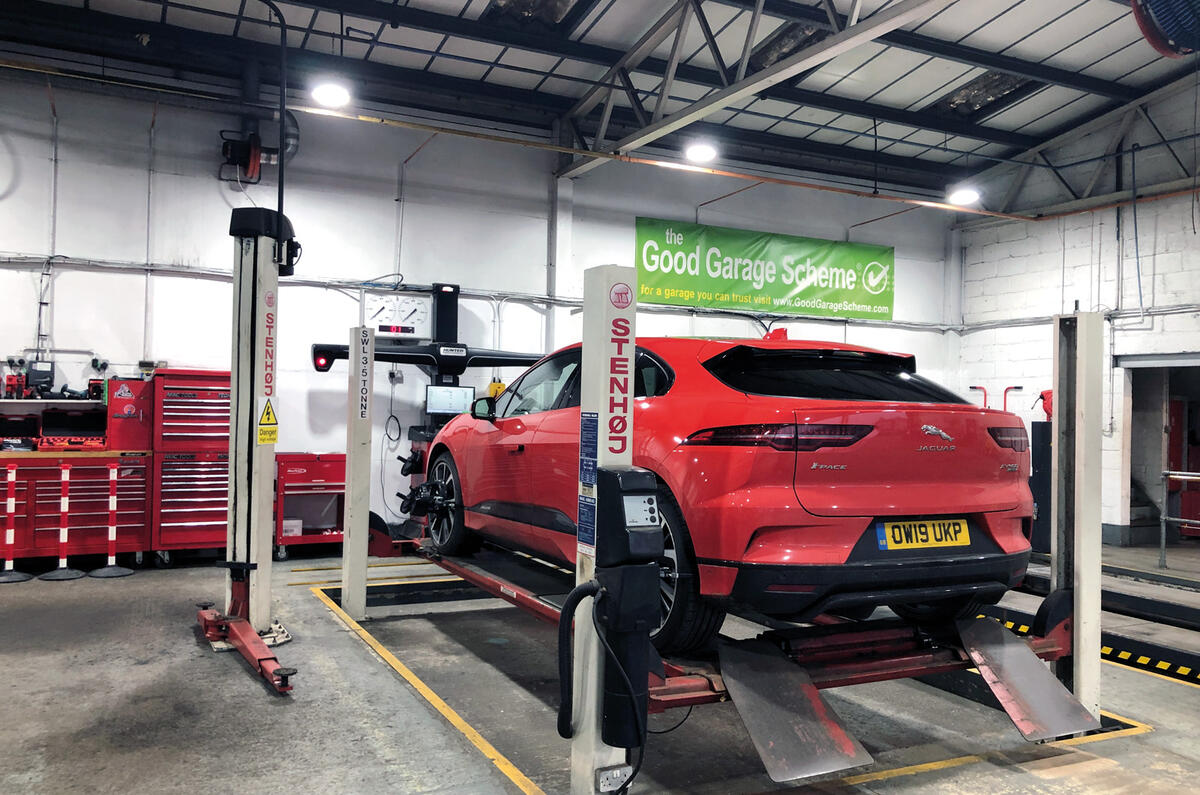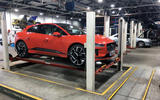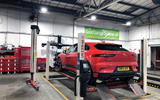As EVs become ever more common on our roads and we move towards the 2030 ban on pure combustion engines, it’s not just car owners who need to be aware of the shift in the automotive landscape.
Garages and workshops are also looking into being able to repair and service EVs. If there’s to be a huge shift to electric cars, dealers – be they large retail groups or smaller independent traders – will need to be up to speed on how to service them.
One thing is for sure: the businesses that service our cars will need to start preparing now for the electric revolution. Here’s how they can begin to upgrade their workplaces.
Build capacity
A capacity check is step one. If a business is looking to accommodate greater numbers of EVs, it is important to ensure there is the cabling and infrastructure in place.
Businesses can ask a local electrician to ensure that there is sufficient capacity on site above maximum demand. This is usually either very cheap or even free to undertake. Alternatively, there are companies that can carry out a site survey to produce a turnkey solution. The supply must not have any diversity (a supply calculation) in order to have sufficient power to charge the cars.
If a site is found to have an insufficient supply, there are a few options to consider. It may be necessary to ring-fence power for the EV charging points, in which case a charging point supplier can install a charging point where the power is ring-fenced before it goes to the existing distribution board. Alternatively, a lower-powered charging point that requires less power can be installed.
Where a business has low power supply capacity, it may need to look at investing in an upgrade to its incoming power supply to have the best charging result. One option is to take advice about a supply upgrade from the distribution network operator (DNO). The price for this type of upgrade varies from minimal to quite expensive, depending on how much work the DNO needs to do to get the additional supply into the property. With some luck, the mains cable in the street will pass by the building, meaning minimal infrastructure work.
Garages worrying about major upgrades to substations needn’t be concerned, as these would not typically be required for a standard commercial installation. Not only are they an expensive undertaking, requiring major network upgrades, but they’re also not normally the responsibility of the business owner.
Load management is another potential solution to ensure businesses are ready for the move to EVs, allowing chargers to use only up to a maximum level of energy to help avoid power failures.

Make plans
Installing charging points is the next step, for use by the business itself and possibly the wider public, too. There is a potential extra revenue stream because car owners are likely to seek out businesses that provide EV charging points.
Workshop owners should look to install basic charging points in each bay so EVs can charge while being repaired. They should also consider a handover bay, but here it’s better to have a faster charging point, up to the maximum the building allows, to return the vehicle to the customer with enough power to at least get them home.
With 50kW charging points (rapid chargers), typically 100Aph per unit would be needed. Upgrading the existing supply to support one needs to be considered unless there’s already sufficient juice on site.
For the external points – for customer car parks, for instance – some types of charging areas can provide a number of incidental benefits. Some businesses make the most of the outdoor space by using a charging point as a parking meter, generating additional revenue, or have the ability to customise the screens of these charging points to display promotional material.
Invest in training
We are likely to find that although EVs present initial infrastructure challenges, in general they have fewer maintenance needs than the majority of fossil-fuel vehicles. But that doesn’t mean the end of servicing, because it is more likely that the value for EV owners will be in workshops that are better able to run diagnostics on EVs, in order to ensure that the vehicle is running smoothly. As a result, training will be key – something the Institute of the Motor Industry has repeatedly called for the government to focus on as we advance towards a zero-emission future.
Safety and equipment
Beyond charging, workshops may have to make other changes to work on EVs. Insulated tools are a must, of course, as well as rubber boots, a non-conductive ‘barge pole’ and other equipment relating to isolating the vehicle and making sure that unauthorised people don’t wander into the area.
While business owners are assessing risks, it’s worth considering if the lifting gear is suitable. EVs are much heavier than other types of cars, because of their heavy batteries, and the centre of gravity will shift dramatically when the battery is removed on some hybrids. Garages will need to revisit manufacturers’ procedures for lifting equipment to ensure they are aware of any changes required when handling EVs.
A whole range of new safety challenges arises with EVs as well. For instance, stored electric energy, or multiple vehicles plugged into charging points at any one time, raises the risk of an explosion or an accident, so as with any battery being charged, making sure the ventilation is adequate is vital.
The key message is not to panic about the electric future. The outlay to cater for EVs may not be as great as some might think, particularly as the main pieces of infrastructure are probably in place already. If a business becomes an early adopter, the rewards could well be worth the cost of upgrading.
Five top tips for workshops to get sorted for EVs
- Make sure you have ‘ring-fenced’ your power supply before you add banks of fast chargers. Your electrician should be able to help with this.
- Set up a dedicated EV service bay, with the insulated tools and safety equipment to hand. Most tool suppliers will be happy to help with this.
- However, it’s unwise to think that buying every EV tool from the catalogue will suddenly make you a specialist. It won’t. Many problems with EVs stem from faulty actuators or sensors that read out of spec, so studying multimeter and diagnostics basics is recommended.
- Make sure that everyone who is likely to touch an EV is IMI certified and that regular training takes place.
- If your business includes body repairs, you might want to consider becoming a certified repair centre for newer brands such as Tesla.
Kevin Howle
EV techies won't need the skills of an IT geek - at least not yet

Current Block Exemption regulations came into effect in 2010 in order to preserve competition in the servicing and repair market by requiring vehicle manufacturers to hand over technical data. However, those rules were drafted long before anyone had heard the phrase ‘connected car’.
The regulations are up for renewal in 2023 and the challenge is to find a fair way for repairers to access data that, for the most part, is now ‘offboard’, meaning that is stored on a remote computer server somewhere, without compromising the security of the vehicle’s systems.
Some good news is that, despite the complexity of driver assistance features and the electronic problems that arise on new-generation vehicles, it won’t always require access to inaccessible computer systems, nor the skillset of an IT expert to fix them. According to Matt Cleevely from independent electric vehicle workshop Cleevely EV, it is traditional electrical fault finding and knowing how to identify and test electronic components that are the key to EV success.
“The majority of what we are seeing day to day is general maintenance and repair works, suspension, brakes etc,” said Cleevely. “When it comes to advanced diagnostics, I don’t think having an IT background is going to overly help you.”
He said the jobs in his workshop at the time of speaking to us were all board level faults: “Yes, you might have an IT background, but it isn’t going to help you when you are finding faulty capacitors and integrated circuits.”
Things may change, but Cleevely advises technicians to upskill on testing, loading and troubleshooting with the multimeter before they get obsessed with learning how to access and read back-end code.
Greg Whitaker
READ MORE
Road to 2030: Understanding the legislation behind the 2030 ban









Add your comment